Top 12 Best Analytical Essay Examples
Analytical essay examples serve as beacons of insight, guiding writers through the intricate art of critical analysis. In this article, we explore 12 exemplary ... read more...instances that unravel the essence of analytical writing.
-
Topic: The Role of Technology in Shaping 21st-Century Education
In the 21st century, technology is pivotal in shaping education's future trajectory. This essay delves into the multifaceted role of technology in teaching methods, accessibility, and skill development.
First of all, the evolution of teaching methods, facilitated by technological advancements, marks a significant transformation in educational practices. Technology has introduced interactive tools, such as smartboards and digital simulations. For instance, virtual reality (VR) in classrooms makes complex subjects more accessible. However, technology's impact on student outcomes can vary. A McKinsey study found that using laptops and tablets in classrooms sometimes correlates with lower student outcomes, particularly in mathematics. Therefore, its effectiveness depends on the context of use and the subject matter (McKinsey, 2020).
Secondly, accessibility to education has been greatly enhanced through technology. Digital platforms like Coursera and Khan Academy allow learners worldwide to access high-quality resources (Johnson, 2019). The proliferation of digital libraries and educational resources online ensures that learning is not confined to physical classrooms. However, the relationship between technology and educational outcomes varies by region. In the United States, students who use laptops in the classroom score higher on assessments compared to those who do not (McKinsey, 2020).
Finally, the integration of technology in education has also emphasized the importance of new skill sets. Digital literacy, critical thinking, and adaptability are crucial in a rapidly digitalizing world. Brookings highlights their significance in today's increasingly complex societies (Brookings, 2019). Technology adoption in classrooms has prompted a shift toward teaching these 21st-century skills.
In conclusion, technology's role in shaping 21st-century education is undeniable. It has transformed teaching methods, enhanced educational accessibility, and necessitated the development of new skills. As technology continues to evolve, its potential to further revolutionize the educational landscape remains significant.
References
- McKinsey. (2020). New global data reveal education technology’s impact on learning. https://learningportal.iiep.unesco.org/en/library/new-global-data-reveal-education-technologys-impact-on-learning
- Brookings. (2019). Integrating 21st-century skills into education systems: From rhetoric to reality. https://www.brookings.edu/articles/integrating-21st-century-skills-into-education-systems-from-rhetoric-to-reality/
- Johnson, L. (2019). Online Learning and Educational Access. Global Education Review, 6(3), 30-45.

Photo by SDI Productions on gettyimages.com https://www.educationmattersmag.com.au/21st-century-learning-inclusivity-equity-and-accessibility-in-technology/ 
Photo by Prasit photo on gettyimages.com https://news.cgtn.com/news/2020-10-10/Overcoming-the-digital-divide-in-online-education-UtQ3NUNOM0/index.html -
Topic: The Impact of Globalization on Indigenous Cultures
In the context of globalization, indigenous cultures face both opportunities and challenges that significantly affect their traditional ways of life. This essay explores the impact of globalization on indigenous cultures in three primary aspects: cultural assimilation and loss, environmental impacts, and potential benefits from globalization.Firstly, globalization often leads to cultural assimilation and loss. The spread of a dominant global culture, characterized by Western norms and values, exerts pressure on indigenous cultures to conform. This can result in the erosion of traditional practices, languages, and identities. Indigenous cultures compete with the pervasive influence of global media, technology, and consumerism. The homogenization of cultures due to globalization poses a significant threat to the richness of indigenous traditions.
Secondly, the environmental impacts of globalization pose serious challenges to indigenous communities. Many indigenous cultures have a deep connection with their natural environment. However, globalization often leads to environmental degradation in areas inhabited by indigenous peoples. Activities such as deforestation, mining, and large-scale agriculture threaten the sustainability of these environments. The act directly impacts the well-being and cultural survival of indigenous populations. These adverse environmental effects highlight a conflict between the goals of global economic development and the preservation of indigenous lands.
However, globalization also presents potential benefits for indigenous cultures. Advancements in communication technologies can offer indigenous communities new opportunities to engage with the broader world. Through the internet and social media, indigenous groups can share their cultures and connect with global audiences. This can lead to more significant support for indigenous issues, as well as opportunities for economic development through tourism and the global market. Additionally, globalization can facilitate access to education, healthcare, and other services. That may have been previously unavailable or inaccessible to remote indigenous communities.
In conclusion, while globalization poses significant threats to preserving indigenous cultures, it also offers opportunities for these communities to engage with the global discourse. The act of balance remains a critical challenge for indigenous peoples in the face of globalization.

Photo by metamorworks on gettyimages.com https://www.japantimes.co.jp/2023/05/19/special-supplements/new-initiatives-increase-globalization-education/ 
Screenshot of https://www.insider.com/oldest-traditions-in-america-are-still-carried-out-today-2020-5 -
Topic: The Psychological Effects of Social Media on Adolescents.
The psychological effects of social media on adolescents are a subject of increasing importance. This essay explores various impacts, positive and negative, that social media usage has on the mental health and well-being of adolescents.
Firstly, social media can negatively impact adolescent mental health. The negative effects include poor sleep quality, increased levels of anxiety and depression, and heightened vulnerability. These negative impacts are exacerbated by emotional investment in social media. Since it leads to feelings of inadequacy, loneliness, and self-harm. A Mayo Clinic study discovered that teens spending over three hours daily on social media may be at higher risk for mental health problems. The study found links between extensive social media use and depression or anxiety symptoms in teenagers.
However, social media can have positive aspects. Social media platforms offer adolescents spaces for self-expression, entertainment, and forming social networks. These networks can provide valuable support, especially for those experiencing exclusion, disabilities, or chronic illnesses. Furthermore, social media can expose teens to diverse ideas and current events and teach them about various subjects. Thus, when used in moderation, social media can be a tool for positive social learning.
It's crucial to understand that the impact of social media on adolescents varies based on individual characteristics and usage patterns. Passive use of social media, such as merely viewing others' photos, has been linked with declines in life satisfaction. In contrast, interactive use might not have such adverse effects. Additionally, social media platforms can amplify pressures for social validation among teens, who are particularly sensitive to peer opinions.
In conclusion, while social media presents potential risks to adolescent mental health, it also offers opportunities for positive engagement and support. The key is balanced usage, with an emphasis on developing digital literacy and healthy online behaviors. Parents and educators play a crucial role in guiding adolescents to navigate social media in ways that minimize risks and maximize benefits.
Reference
- Mayo Clinic. (2019). Teens and social media use: What's the impact? https://www.mayoclinic.org/healthy-lifestyle/tween-and-teen-health/in-depth/teens-and-social-media-use/art-20474437

Photo by Rockaa https://www.bgca.org/news-stories/2023/October/what-age-should-kids-have-social-media 
Photo by AntonioGuillem on istockphoto.com https://mypsychiatrist.com/blog/the-pros-and-cons-of-social-media-on-mental-health/ - Mayo Clinic. (2019). Teens and social media use: What's the impact? https://www.mayoclinic.org/healthy-lifestyle/tween-and-teen-health/in-depth/teens-and-social-media-use/art-20474437
-
Topic: Analyzing the Themes and Motifs in 'To Kill a Mockingbird.'
In Harper Lee's "To Kill a Mockingbird," several themes and motifs are woven into the narrative. Each contributes to the novel's enduring impact. This essay will explore three major themes: prejudice, moral complexity, and innocence.
The first major theme, prejudice, is evident in Maycomb's societal structure. The novel showcases different forms of prejudice, including racism, classism, and sexism. The most blatant form is the racial prejudice against Tom Robinson, a Black man falsely accused of raping a white woman. His trial and the events surrounding it expose the deep-seated racism in the town. Additionally, Lee juxtaposes these prejudiced attitudes with those of more progressive characters like Atticus Finch. Therefore, they highlight the absurdity and injustice of such views.
The second theme, moral complexity, is explored through Scout and Jem's interactions with various individuals in town. Initially, they have a naïve understanding of good and evil. However, the complexities of human nature become apparent to them, particularly during Tom Robinson’s trial. They learn that people cannot be simply categorized as wholly good or bad. Characters like Mrs. Dubose, initially perceived as merely mean, are later understood in a more empathetic light. This theme is crucial as it illustrates the importance of understanding and acknowledging the complexities within each individual.
Lastly, the theme of innocence is central to the novel. Scout and Jem's journey mirrors the broader social awakening in Maycomb. The trial and its outcome are pivotal in this loss of innocence as they confront the harsh realities of racism and injustice. This theme also extends to the character of Boo Radley, initially perceived as frightening but later revealed to be misunderstood and kind. The children’s evolving perception of Boo symbolizes their growing understanding of the world's complexities and the loss of their initial innocence.
In conclusion, "To Kill a Mockingbird" masterfully addresses themes of prejudice, moral complexity, and innocence. Through its rich narrative and complex characters, the novel invites readers to reflect on these enduring themes and their relevance in contemporary society.
Reference
- Lee, H. (2010). To kill A mockingbird. Arrow Books.

Screenshot of https://en.wikipedia.org/wiki/To_Kill_a_Mockingbird 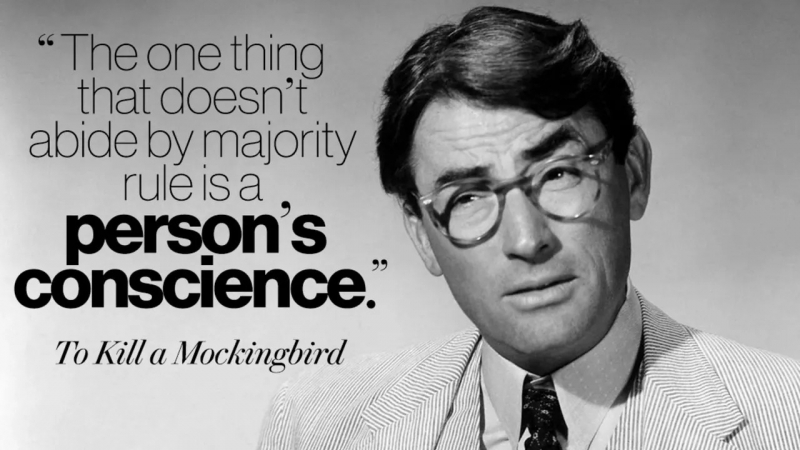
Screenshot of https://www.glamour.com/story/11-to-kill-a-mockingbird-quote - Lee, H. (2010). To kill A mockingbird. Arrow Books.
-
Topic: The Role of the American Dream in 'The Great Gatsby.'
In F. Scott Fitzgerald's "The Great Gatsby," the American Dream serves as a multifaceted thematic cornerstone. This essay will explore its three roles in representing aspiration, moral decay, and societal inequality.Firstly, the American Dream symbolizes aspiration, epitomized by Jay Gatsby. His pursuit of wealth and status reflects the dream's promise of upward mobility and success. Gatsby's lavish parties and grandiose lifestyle illustrate his efforts to attain this dream. It is the universal desire for a better, more prosperous life. But his unattainable love for Daisy reveals its hollowness and elusiveness. The dream, though seemingly within reach, remains unfulfilled.
Secondly, the American Dream in "The Great Gatsby" reflects moral decay. Through dubious activities, Gatsby's means of achieving his dream highlight the corrupting influence of the relentless pursuit of wealth. Characters like Tom and Daisy Buchanan, embodying wealth and status, are also portrayed as morally bankrupt. Their careless actions reflect the decadence and moral decay underlying the dream's glamorous facade.
Finally, the novel portrays the American Dream as a symbol of societal inequality. Characters from lower social classes, like George and Myrtle Wilson, are depicted as unable to achieve the dream due to systemic barriers. Their tragic fates underscore the dream's inaccessibility to those not born into wealth.
In conclusion, "The Great Gatsby" uses the American Dream to explore themes of aspiration, moral decay, and societal inequality. All of them reflect the complexities of American society in the 1920s.
Reference:
- Fitzgerald, F. S. (1925). The Great Gatsby. Charles Scribner's Sons.
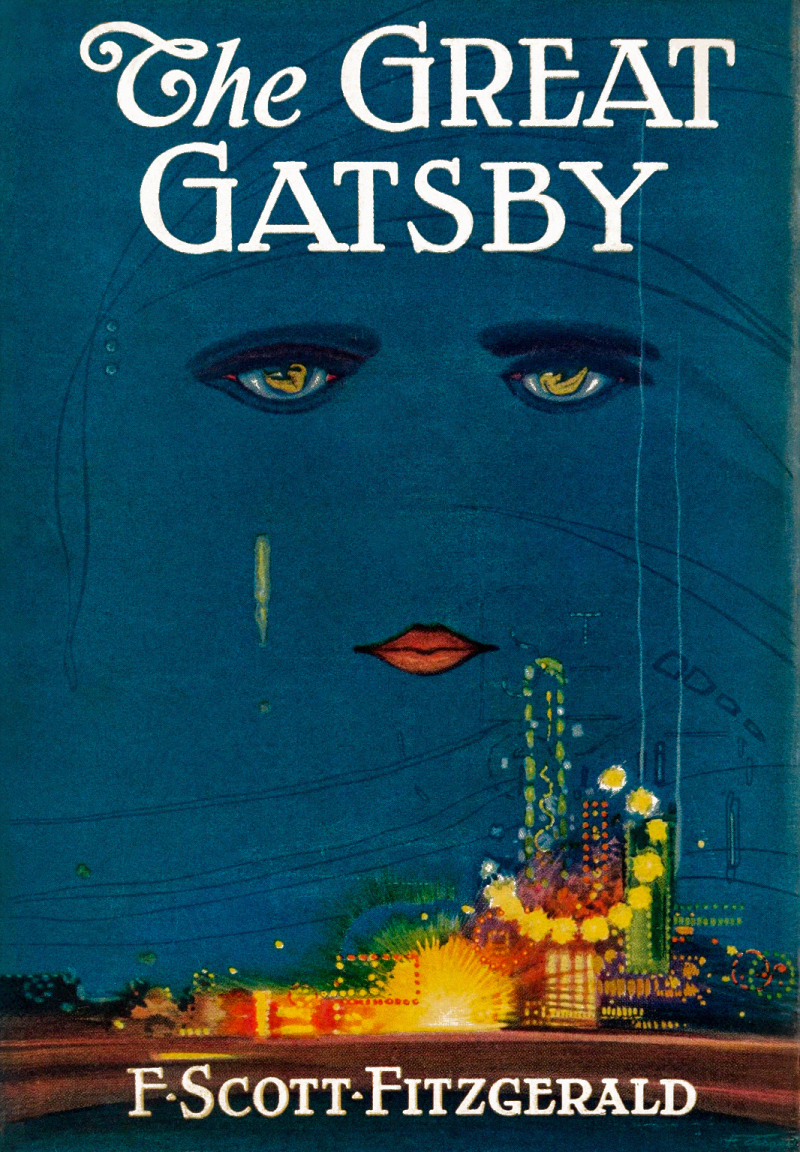
Photo on commons.wikimedia.org https://commons.m.wikimedia.org/wiki/File:The_Great_Gatsby_cover_1925_wikisource.jpg 
Photo by Alexi Rosenfeld on gettyimages.com https://saigonnhonews.com/thoi-su/hoa-ky/american-dream/ - Fitzgerald, F. S. (1925). The Great Gatsby. Charles Scribner's Sons.
-
Topic: Exploring the Symbolism of the River in 'Huckleberry Finn.'
In Mark Twain's "Adventures of Huckleberry Finn," the Mississippi River emerges as a complex symbol. This essay delves into its multifaceted symbolism, highlighting themes of freedom, self-discovery, societal critique, and life's inherent uncertainties.
The river primarily symbolizes freedom and escape. For Jim, it's a refuge from slavery, embodying hope. Twain's depiction of the river at night contrasts sharply with the oppressive societal norms on land, underscoring its role as a sanctuary (Twain, 1884). However, it's not just physical freedom that the river grants. It also offers psychological liberation, particularly for Huck. His reflections and moral dilemmas, played out against the backdrop of the flowing river, signify his journey from innocence to a more complex understanding of right and wrong.
Moreover, the river challenges and critiques societal norms. Huck and Jim's bond, free from racial prejudices and societal constraints, flourishes on the river. This starkly contrasts with the rigid, often hypocritical societal structures on land. Here, Twain uses the river as a metaphorical space where conventional social orders are subverted. Therefore, it highlights the novel's critique of societal injustices and prejudices.
Yet, the river's symbolism is not uniformly positive. It also embodies danger and unpredictability. The episodes of fog and turbulent waters are metaphorical for the difficult journey toward freedom. This duality of the river reflects life's unpredictable nature and the inherent challenges in the quest for liberation and self-realization.
In conclusion, the Mississippi River in "Huckleberry Finn" is a rich, complex symbol. It encapsulates themes of freedom, transformation, societal critique, and life's uncertainties. Twain's novel uses the river not just as a setting but as a narrative device that reflects the characters' inner transformations and offers commentary on the societal norms of the time.
Reference
- Twain, M. (1884). Adventures of Huckleberry Finn. Charles L. Webster and Company.
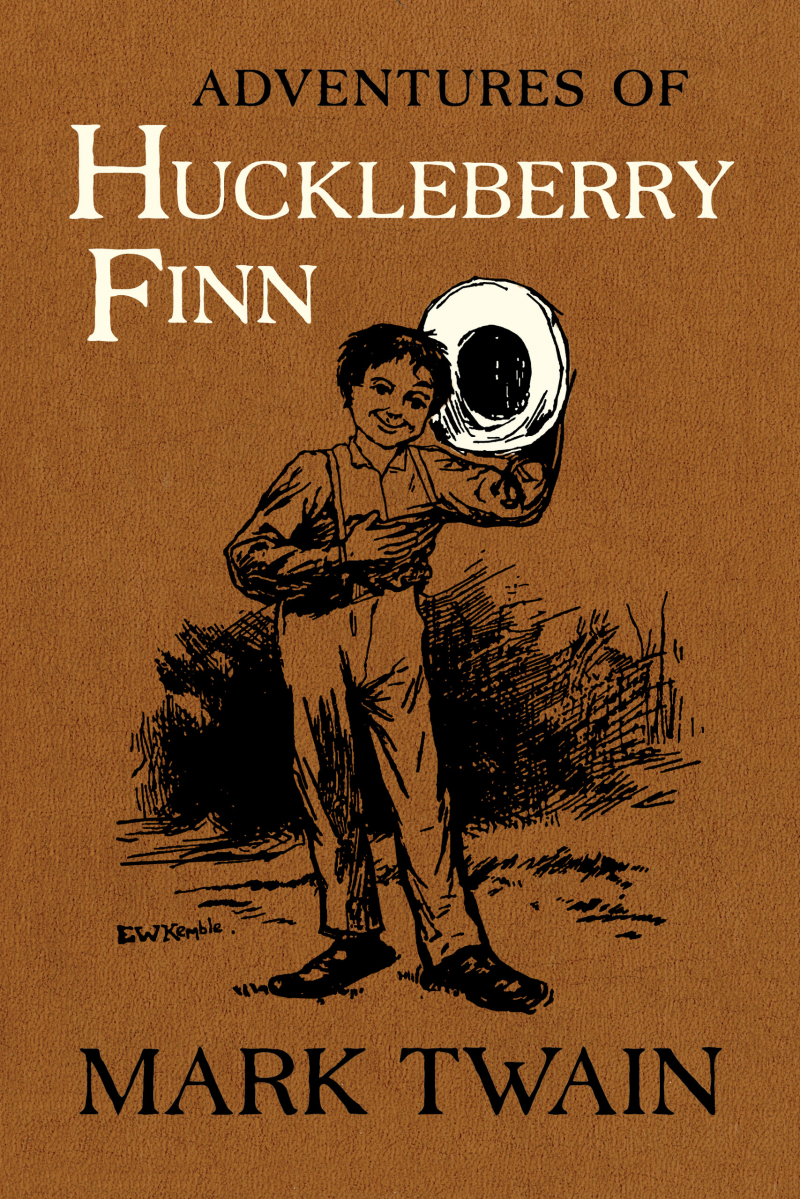
Screenshot of https://www.ucpress.edu/book/9780520343641/adventures-of-huckleberry-finn 
Photo by United Archives on gettyimages.com https://nypost.com/2022/08/25/university-gives-trigger-warning-for-huckleberry-finn/ - Twain, M. (1884). Adventures of Huckleberry Finn. Charles L. Webster and Company.
-
Topic: Analysis of Orwell's Use of Propaganda in '1984.'
In George Orwell's "1984," propaganda is a powerful tool employed by the Party to control the population. This essay explores three key aspects of Orwell's use of propaganda: the distortion of reality through language, the creation of a false sense of patriotism, and the manipulation of historical narratives.Orwell vividly portrays the distortion of reality through language, exemplified by the Party's use of Newspeak. Newspeak is a linguistic tool designed to eliminate words that could be used for subversive thoughts. By restricting language, the Party limits the range of expressible ideas. Therefore, it is challenging for individuals to contemplate rebellion. The concept of doublethink, where contradictory beliefs coexist, is another linguistic manipulation. For instance, the Party's slogan, "War is Peace, Freedom is Slavery, Ignorance is Strength," controls the narrative and manipulates citizens' perceptions.
The creation of a false sense of patriotism is another significant aspect of Orwell's exploration of propaganda. The Party manipulates symbols such as the Party emblem and the concept of Big Brother. They aim to instill loyalty and devotion among citizens. The Two Minutes Hate serves as a theatrical display of orchestrated emotions. It directed citizens' anger and hatred toward a common enemy, further solidifying their allegiance to the Party. This orchestrated patriotism not only reinforces conformity but also suppresses dissent.
Orwell underscores the manipulation of historical narratives as a potent tool for propaganda. The Party's control over historical records allows it to shape and reshape the past. Thereby, it controls the present and future. The character Winston's job at the Ministry of Truth involves altering historical documents to align with the Party's current narrative. This manipulation of history erases dissent, dissenters, and any evidence contradicting the Party's version of events. The absence of an objective historical record leaves citizens without the means to challenge the Party's authority.
In conclusion, Orwell's "1984" masterfully explores the insidious nature of propaganda through the distortion of language, the creation of false patriotism, and the manipulation of historical narratives. The Party's control over information is a central theme, illustrating the impact propaganda can have on shaping individuals' perceptions.
Reference
- Orwell, G. (1949). 1984.
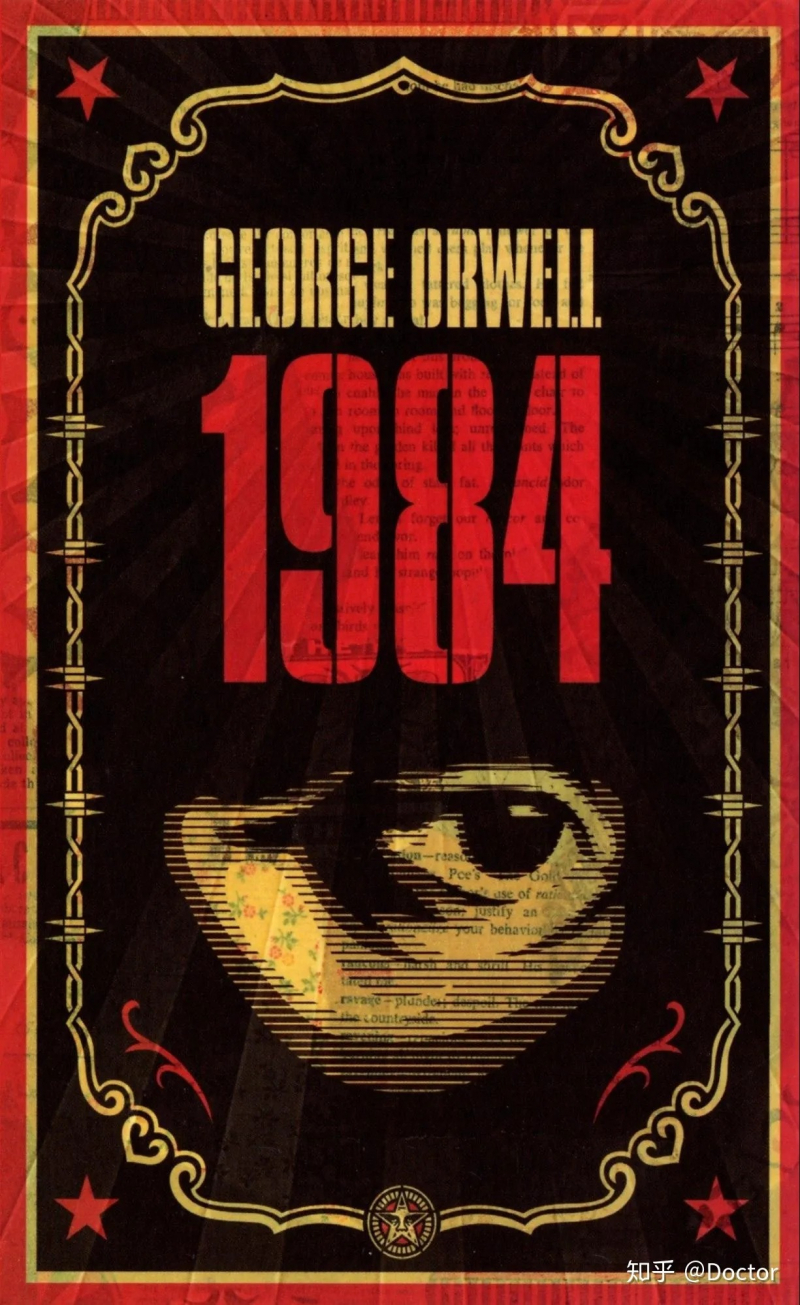
Screenshot of https://hammerfilms.com/blogs/features/15-of-the-most-evil-lines-in-literature 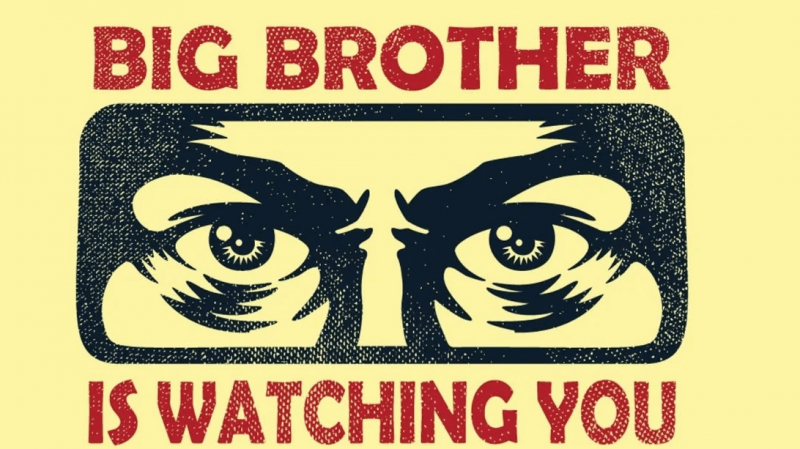
Screenshot of https://www.panmacmillan.com/blogs/literary/george-orwell-quotes-1984-animal-farm - Orwell, G. (1949). 1984.
-
Topic: Shakespeare's Use of Soliloquies in 'Hamlet': A Detailed Analysis.
Shakespeare's use of soliloquies in "Hamlet" is a masterful narrative technique that impacts the audience's understanding of the play's themes. The soliloquies are crucial in revealing Hamlet's internal struggles, creating a unique atmosphere, and exploring timeless themes.
One significant aspect of these soliloquies is their role in advancing the plot. Through Hamlet's introspective monologues, the audience gains insight into his plans for revenge and his internal conflicts. For example, in his soliloquies, Hamlet expresses his anguish over his father's death, his mother's hasty remarriage, and his burning desire for revenge. This not only advances the narrative but also creates suspense and anticipation about how Hamlet will achieve his goals.
Additionally, the soliloquies create a unique atmosphere in the play. They often contrast the external actions occurring on stage, offering a glimpse into Hamlet's true self, unmasked by pretense or deception. This contrast adds depth to the play. It also highlights the complexity of Hamlet's character as he grapples with moral dilemmas.
The soliloquies in "Hamlet" also explore universal themes such as mortality, ethics, and the nature of existence. Hamlet's introspections delve into the human condition, particularly in the famous "To be or not to be" soliloquy. That ponders the value of life and the inevitability of death. This philosophical depth is a hallmark of Shakespeare's work by inviting the audience to reflect on their own experiences.
In conclusion, the soliloquies in "Hamlet" are integral to the play's enduring appeal. They provide crucial insights into Hamlet's character, advance the plot, create a unique atmosphere, and explore timeless themes.
Reference
- Shakespeare, W. (1992). Hamlet, prince of Denmark. C. Watts & K. Carabine (Eds.). Wordsworth Editions. (Original work published 1599)
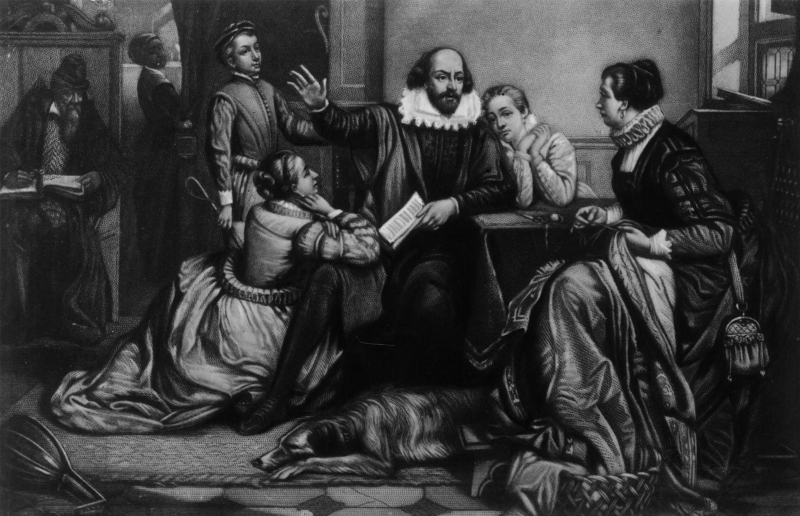
Photo by Heritage Images on Heritage Prints & Wall Art https://www.heritage-print.com/william-shakespeare-reciting-hamlet-family-1900-15345261.html 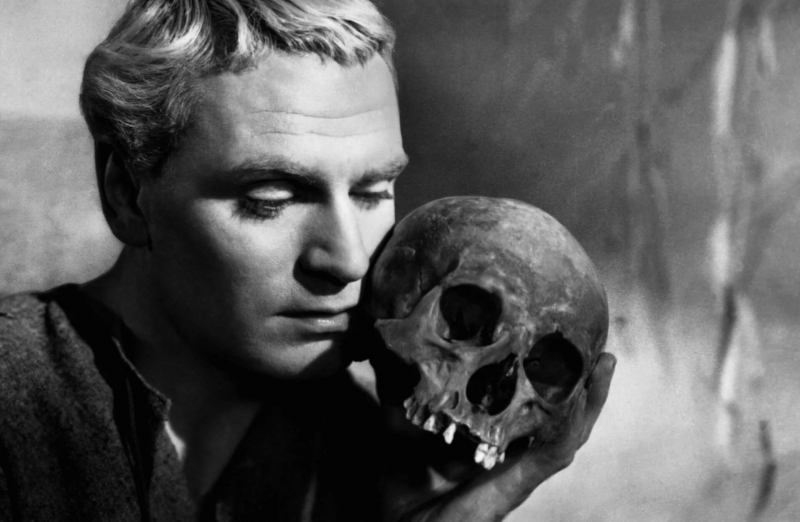
Screenshot of https://medium.com/@Book.for.book/hamlet-by-william-shakespeare-summary-deba9e14e4f6 - Shakespeare, W. (1992). Hamlet, prince of Denmark. C. Watts & K. Carabine (Eds.). Wordsworth Editions. (Original work published 1599)
-
Topic: The Impact of War on Society in 'All Quiet on the Western Front.'
In Erich Maria Remarque's "All Quiet on the Western Front," the impact of World War I on society is deeply explored through the eyes of young German soldiers. This essay analyzes three significant implications of the war on society: psychological trauma, the disconnection between the home front and the battlefield, and the generational rift.The first major impact is the psychological trauma inflicted on soldiers. The narrative, centered on the protagonist Paul Bäumer, details the brutal reality of trench warfare. Soldiers were initially motivated by notions of patriotism and glory. Then, they face the horrific realities of war, which drastically leaves them with deep psychological scars. The novel portrays the constant threat of death, the savagery of battle, and the resulting mental anguish that haunts soldiers. It emphasizes the long-lasting impact of war beyond physical injuries.
Secondly, the novel highlights the disconnect between the home front and the battlefield. During Paul's leave, he returns to his hometown. It's where life continues with a semblance of normalcy, starkly contrasting with the chaos of the front. This section of the novel showcases the inability of civilians to comprehend the full extent of the war's horrors. This disconnect isolates soldiers and creates a divide in empathy between those who experience the war firsthand and those who remain distant from its direct impacts.
Lastly, "All Quiet on the Western Front" addresses the generational rift exacerbated by the war. The older generation, represented by figures like Kantorek, is portrayed as being out of touch with the realities of the war. He has encouraged the younger generation to join the fight with idealized notions of patriotism and valor. This misguided enthusiasm contributes to the tragedy experienced by the younger soldiers, who return from the war with a sense of betrayal and disillusionment. The novel critiques the societal and generational attitudes that glorified the war.
In conclusion, "All Quiet on the Western Front" poignantly explores the devastating impacts of World War I on society. Through its vivid portrayal of the psychological trauma of soldiers, the disconnection between the home front and the battlefield, and the generational rift caused by war, the novel serves as a powerful anti-war statement.
Reference
- Remarque, E. M. (1929). All Quiet on the Western Front.

Photo by Gamereactor on Gamereactor UK https://gamereactor.eu/all-quiet-on-the-western-front-netflix-1217953/ 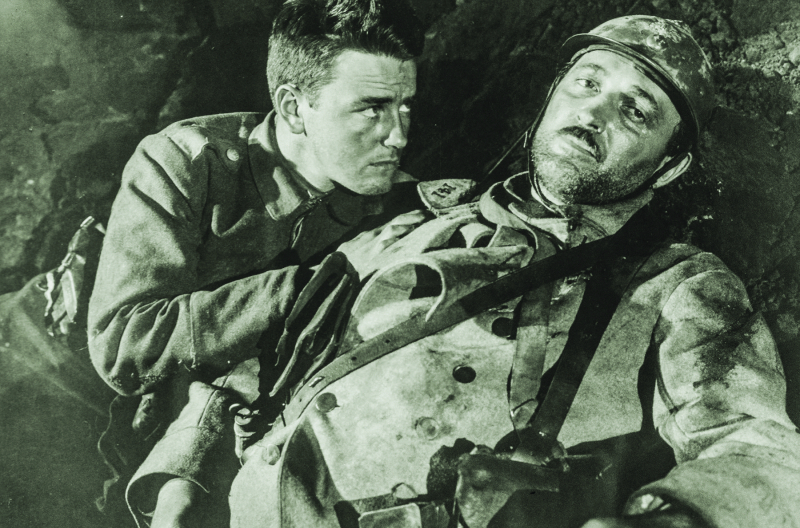
Photo by MARKA on Alamy Stock Photo https://www.historynet.com/this-academy-award-winning-war-film-enraged-the-nazis/ - Remarque, E. M. (1929). All Quiet on the Western Front.
-
Topic: The Reasons for Humans’ Evil Actions in Literature.
In literature, the evil actions of humans are a recurrent theme, explored from multiple angles to understand their origins and consequences. This essay delves into the reasons behind these actions as lack explanatory power or have specific motivations.
One perspective on the nature of evil actions in the literature suggests that they stem from a lack of explanatory power. It essentially is dismissive classifications that defy explanation. Labeling an action or person as 'evil' implies that their actions are incomprehensible or result from supernatural forces. Thus, it provides no genuine reason. For instance, when discussing why specific individuals commit heinous acts while others with similar backgrounds do not, the label of 'evil' is often employed to fill the gap in understanding. Yet, it fails to offer a substantial explanation.
Another approach argues that evil actions can be understood as resulting from specific motivations. Identifying these states provides insight into why certain actions occur. Theorists suggest that these actions result from unsavory motivations. This explanation helps us understand reactions to evil actions. It indicates that reactions of horror arise because the actions stem from despicable motivations.
Despite these theoretical perspectives, the concept of evil remains contentious. Some argue that it is too harmful or dangerous to use due to its potential misuse or misinterpretation. The ambiguity surrounding the term 'evil' and the harm it can cause when misapplied are significant concerns. However, others believe that understanding evil is crucial to preventing its occurrence in the future. They argue that ignoring evil is more dangerous than trying to understand its sources.
In conclusion, the reasons for humans' evil actions in literature are complex and multi-faceted. While some argue that the concept of evil lacks explanatory power, others believe that understanding the motivations behind these actions is crucial. Ultimately, literature is a powerful medium for exploring these themes.
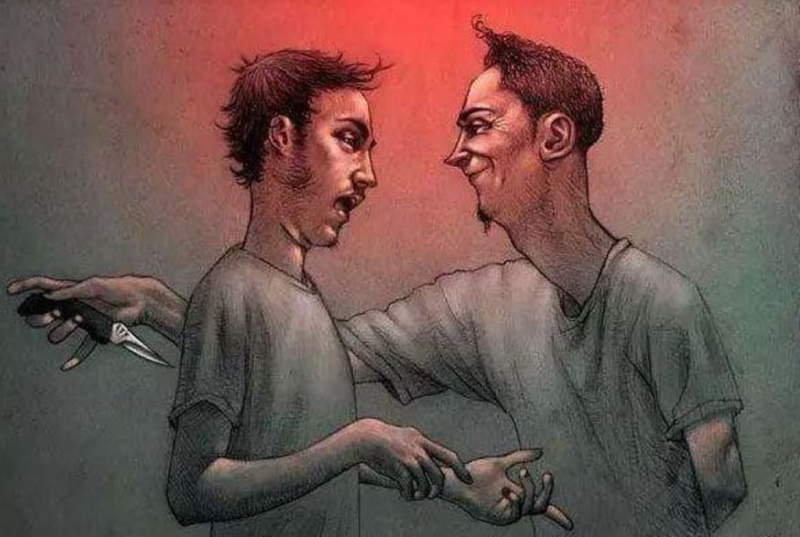
Screenshot of https://republicpolicy.com/dissecting-human-nature-is-it-evil-or-good/ 
Photo by Prasong Maulae on istockphoto.com https://www.helpingwritersbecomeauthors.com/why-hypocrites-make-excellent-bad-guys/ -
Topic: Existential Themes in Camus' 'The Stranger.'
In Albert Camus' novel "The Stranger," existential themes profoundly influence the narrative. They showcase life's absurdity, society's role, and individual freedom. This essay explores these themes in detail.One of the primary existential themes in "The Stranger" is the absurdity of life. Through Meursault's experiences and actions, Camus demonstrates that life has no inherent meaning. The concept of absurdity underpins this theme. It is a central element in Camus's philosophy, where human existence lacks rational meaning or order. For instance, Meursault's indifferent reaction to his mother's death or his subsequent murder of an Arab man appears to be devoid of any rational explanation.
Society's role in shaping individual existence is also a crucial theme. Meursault is an outsider who refuses to conform to societal expectations. His actions, such as his emotional detachment and his murder trial, challenge conventional beliefs and values. They led to his social and legal downfall. This aspect of the novel critiques society's rigid structures.
Camus’s existential philosophy, which asserts that life is inherently meaningless, also plays a crucial role in the novel. Through Meursault's struggle to find meaning in his existence, Camus illustrates the importance of creating one's sense of purpose in a world that offers no inherent meaning. This idea reflects existentialist thought. It is where individuals are responsible for finding their own meaning in life despite its intrinsic meaninglessness.
The novel also uses symbolism, notably the sun, and heat, to convey its existential themes. They are oppressive heat and blinding sun at Meursault's mother's funeral and the murder scene. They symbolize the harsh reality of existence and the protagonist's detachment from the world. These elements are metaphors for the blinding nature of truth and the indifferent universe in which individuals find themselves.
In summary, "The Stranger" by Albert Camus is a profound exploration of existential themes such as the absurdity of life, the role of society in shaping individual existence, and the pursuit of personal meaning in an inherently meaningless world. Through the character of Meursault and the use of symbolism, Camus vividly illustrates these themes.
Reference
- Camus, A. (1942). The Stranger.
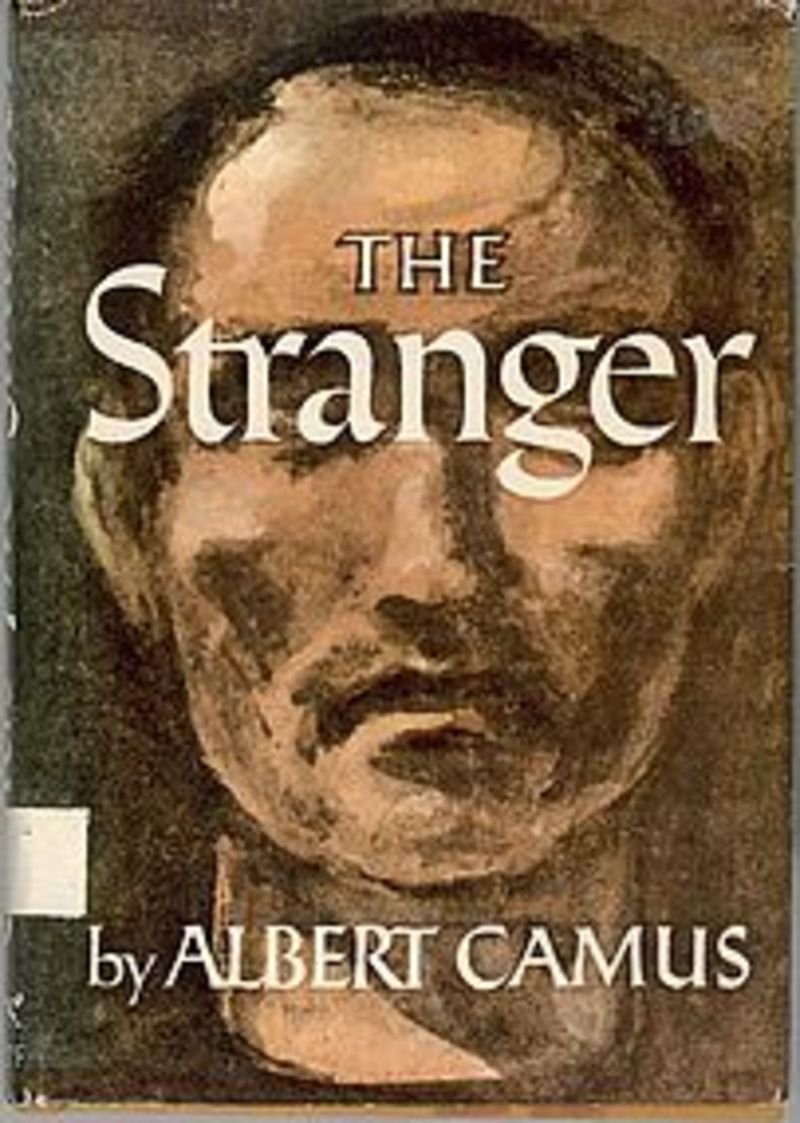
Photo by Carolyn on Flickr https://www.flickr.com/photos/juneny/8285127765 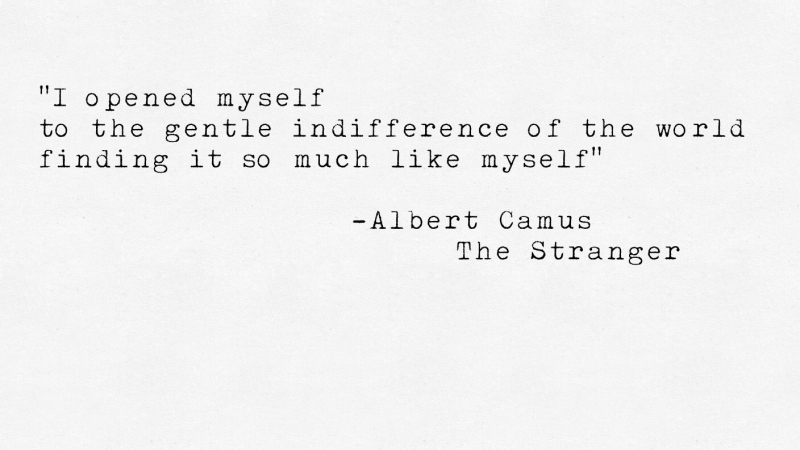
Screenshot of https://www.pinterest.com/pin/415316396876154090/ -
Topic: The Evolution of Tragic Heroes in Ancient Greek Literature.
In the realm of Ancient Greek literature, the evolution of tragic heroes is a fascinating exploration. This essay delves into three key aspects of this evolution: the archetypal tragic hero in works like Sophocles' "Oedipus Rex," the nuanced portrayal of characters like Euripides' Medea, and the shift in focus from fate to human choice in Aeschylus' "Prometheus Bound."
The archetypal tragic hero, epitomized by Oedipus in "Oedipus Rex," adheres to a set of characteristics that lead to their downfall. Oedipus, a noble and virtuous character, is fated to fulfill a prophecy that foretells his tragic end. The inevitability of his fate, coupled with his tragic flaw (hubris), creates a sense of inevitability and catharsis for the audience. The archetypal tragic hero embodies a cosmic struggle against fate. It showcased the interplay between destiny and character choices.
Besides, Euripides' Medea introduces a nuanced portrayal of tragic characters, challenging the traditional archetype. Medea, while a victim of circumstances, becomes an antihero driven by revenge. Her actions, including infanticide, question the conventional moral compass associated with tragic heroes. This evolution introduces a more complex understanding of tragedy, where characters are not solely victims of fate but active participants in their downfall. The shifting moral landscape prompts the audience to grapple with the morality of the protagonist's choices.
In addition, Aeschylus' "Prometheus Bound" marks a departure from the emphasis on fate in traditional tragic narratives. Prometheus, a Titan, defies the gods' will by granting knowledge to humanity. His defiance and suffering symbolize the human struggle for autonomy and the pursuit of knowledge. Unlike the archetypal tragic hero, Prometheus's tragedy stems from his commitment to humanity and his rebellion against divine authority. The focus on human choice and agency heralds a shift in the perception of tragedy. It emphasizes the consequences of individual decisions over preordained destinies.
In conclusion, the evolution of tragic heroes in Ancient Greek literature reveals a progression from archetypal figures bound by fate to nuanced characters driven by personal choices. This evolution adds layers of complexity to tragic narratives.
References
- Sophocles. (c. 429 BCE). Oedipus Rex.
- Euripides. (c. 431 BCE). Medea.
- Aeschylus. (c. 430 BCE). Prometheus Bound.
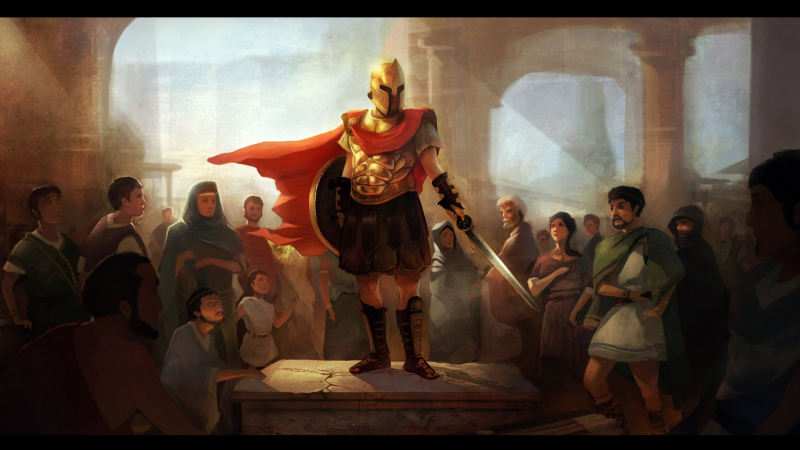
Screenshot of http://ancientheroes.net/blog/what-makes-a-greek-hero 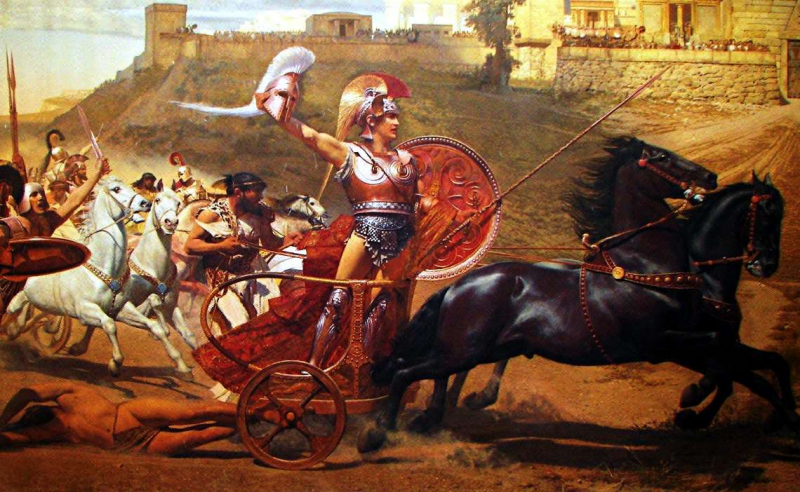
Screenshot of https://www.thoughtco.com/greek-and-roman-heroes-4140371

































